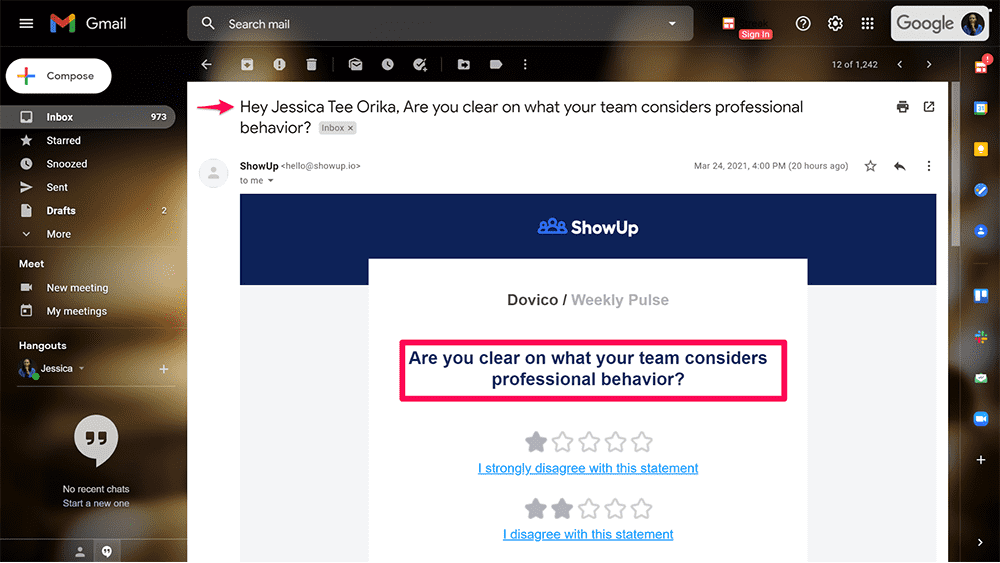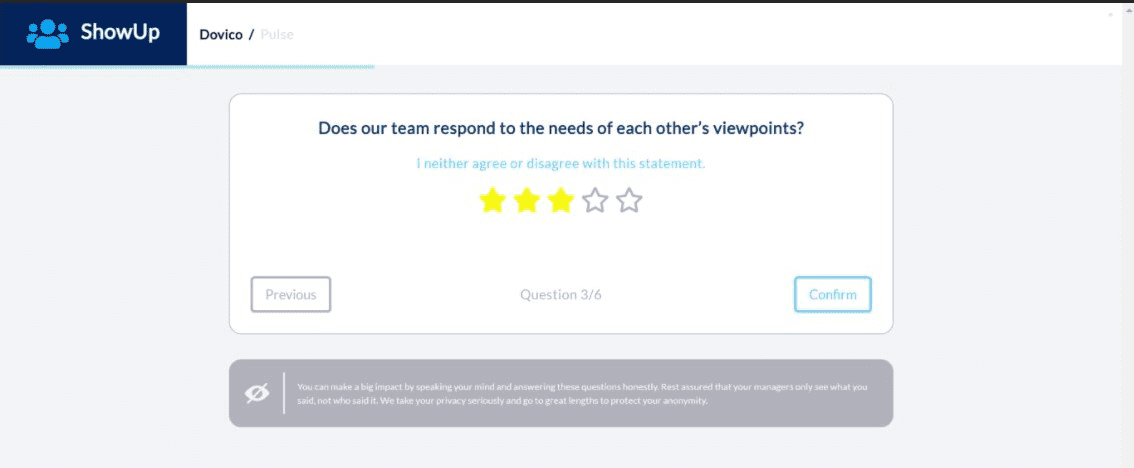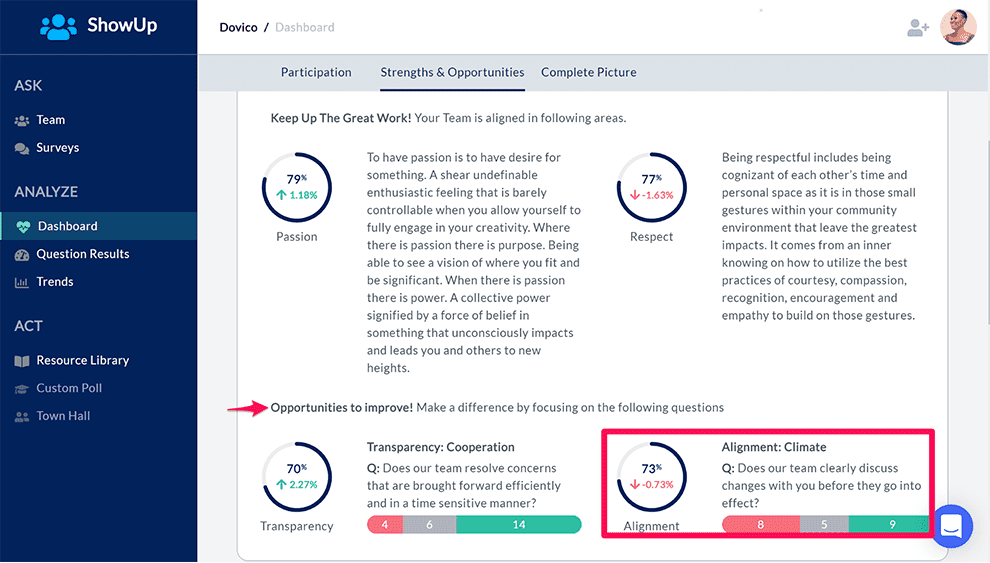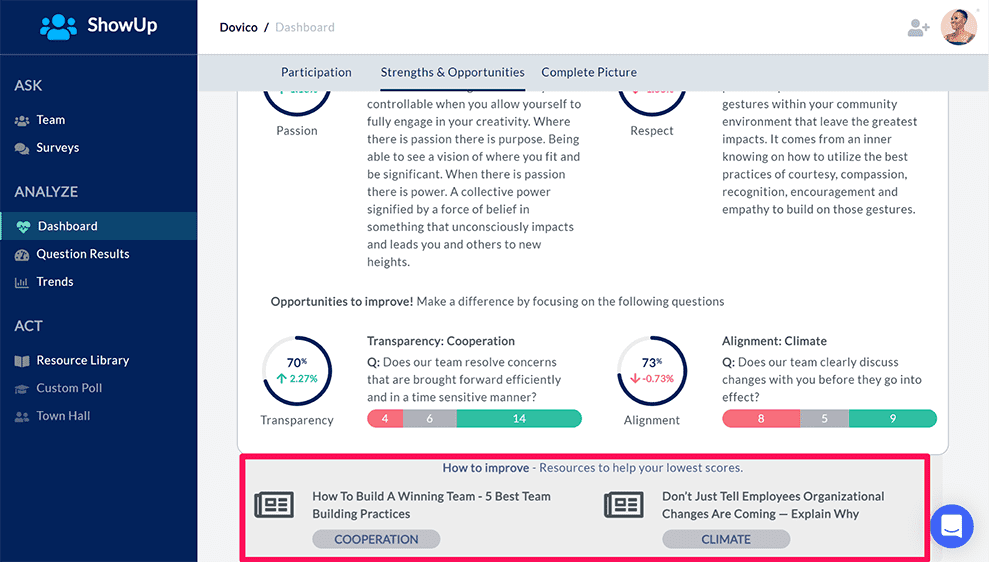Team Alignment: A Manager’s Guide to Boosting Performance (and Driving Growth)
As a manager, your biggest responsibility is to ensure company goals are achieved.
And that'd mean mapping out strategies, assigning responsibilities, and motivating your team to give their best.
If you've been on the scene long enough, you'd know these are the "easy" parts.
The real work is getting your team on the same page (and moving in the right direction). In other words, getting them to understand and focus on achieving those goals effectively.
This, right here, is where most managers crash and burn.
In short, this report revealed 67% of well-formulated strategies failed due to poor execution.
Why, you ask?
Well, when a team isn't aligned, even the best strategies become ineffective. It's why, as a manager, team and organizational alignment should be your #1 priority.
An aligned team understands the company's vision and goals. They understand their part in it. And they collaborate with other employees to achieve those goals.
The results?
Increased collaboration, trust, sales, retention rates, and profits.
And let's not forget the confidence boost you'd get; one that'd positively impact your role as a team leader.
No wonder Kevin Rose, Founder of Digg and Partner at Google said:
A team aligned behind a vision will move the mountains. Sell them on your roadmap and don’t compromise.
So, if you want your team to be more productive and successful, then you must sell the roadmap to the team.
You must get them aligned with your goals. That's a great way to get results. Otherwise, you'll lose your top talent, clients, (and other mouth-watering opportunities).
But how does one get started on building team alignment?
Surveys are one of the best ways to get started.
Specifically, a team pulse survey software.
This fast and efficient solution is a reliable way to get sincere feedback from your team. It’ll help you pinpoint alignment issues within your team.
It doesn’t stop there.
You’d also get insights and know where to focus your efforts. These insights will, in turn, help you build a solid alignment strategy.
The steps to doing all these are what I’ll be showing you in this guide.
Build an Aligned Team and Outperform Competitors with ShowUp.
Let's start here:
Table of Contents:
What is Team Alignment, And Why is It Important?
Jim Collins and Jerry Porras said in the book, Built to Last:
Building a visionary company requires one percent vision and 99 percent alignment.
Having a shared sense of purpose is the secret sauce of productive teams.
And that's the core of team alignment: a shared purpose.
Without this, your mind-blowing strategies may never see the light of day. Or it’ll be a case of poor execution.
If this happens, your vision and goals will suffer. You’ll fall way behind your competitors. And you’ll risk losing top talent to those competitors too.
On the other hand...
When everyone on your team understands, shares, and supports your company's visions and strategic goals, you're off to a great start.
And that’s because when your team is aligned, employees understand:
- What you do;
- Why you do it;
- How you do it;
- What their role (and other employees’ role) are;
- And how they can work together to achieve set goals.
At this point, confusion gets reduced.
They see themselves in your company's story and willingly play their part. Most of all, they trust you to lead the team to glory.
The result, of course, is numerous.
Your people will be more engaged, productive, and happier.
They'll focus more on achieving the goals that have the greatest impact on the company. As a result, your company will experience increased collaboration, trust, sales, retention rates, and profits.
It's why Patrick Lencioni, author of The Five Dysfunctions of a Team, said:
If you could get all the people in an organization rowing in the same direction, you could dominate any industry, in any market, against any competition, at any time.
That’s another way of saying, if you want to dominate your industry, prioritise alignment.
And there’s data to support this.
A study reported by ISA Global found that:
Highly aligned companies grow revenue 58% faster. They are also 72% more profitable than their misaligned counterparts.
See how much better your numbers can become if you pay attention to building alignment in your team?
It’s what happens when you put the people first, not profits. The people, after all, are the assets that convert your big ideas into money.
So how do you get everyone on the same page without losing their uniqueness?
It starts with knowing your team’s alignment score.
And this is where ShowUp, a team pulse survey tool, comes in.
Is Your Team Aligned? How to Find Out Using Team Pulse Surveys
Building team and organizational alignment isn't a one-off effort.
As a manager, you've always got to keep your eyes open and your ears to the ground. That way, you can tell when there's an issue with your team.
So, how do you accurately measure your team's alignment at all times?
By tracking your team's pulse regularly.
A team pulse survey software is a super-fast way to do this.
Right off the bat, it comes with survey questions to measure alignment within an organization.
And the survey answers give you real insights to inform your strategy. This way, you can focus efforts on areas that need urgent attention.
ShowUp is a team pulse software that makes building team alignment a breeze.
It measures alignment using these five traits:
- Behavior
- Climate
- Coordination
- Performance
- Values
These traits narrow down your results.
The process is pretty straightforward.
You schedule weekly or biweekly surveys that'll be delivered directly into your employees’ inbox.
For instance, if you chose to do this every week, then your team will get an email that looks like this:

An employee can participate by clicking on one of the survey options.
To participate in the survey, all an employee needs to do is click on one of the five options provided in the email.
For example, “I disagree with this statement.”
And once they do, ShowUp smoothly transitions them to complete the survey:

In all, they’d answer six questions, and you get a measure of relevant individual traits.
As I mentioned already, the goal is to help you pinpoint where problem areas are so you can focus your efforts.
With these insights, you can uncover alignment gaps and get your team back on track.
The survey, of course, is anonymous.
Offering employees anonymity helps them openly answer questions sincerely. So, you can get more accurate results.
And your focus will be on the areas that need improvement, not on who said what.
ShowUp collates the responses, giving you a clear, detailed report for each category.
Right there on the dashboard, you’ll be able to see your strengths (the areas where your team is aligned).
And your growth opportunities (areas that need your attention). Specifically, the questions that had the lowest score.
It looks just like this:

If this were your team, you’d see that there’s a climate issue.
Anything below 80% (which is the average) is a symptom you shouldn't ignore.
In this case, most feel there’s no open discussion before management makes changes in the company.
Ordinarily, this might go unnoticed, and it could grow into something worse.
But with this insight, fresh from the horse’s stables, you not only know the problem. You now know where to put in the work to get tangible results.
It doesn’t end there.
With ShowUp, you get a backlog of actionable resources to create an action plan and solve this problem immediately:

So there you have it…
A practical way to keep your team aligned with accurate data and actionable tips.
With a tool like ShowUp (and applying each step above), you can build a solid and aligned team.
Build an Aligned Team and Outperform Competitors with ShowUp.
Before I share some tips to get employees aligned, here are...
5 Tell-Tale Signs Your Team is Not Aligned
- They struggle to understand and define the scope of assigned projects.
- They miss deadlines frequently.
- There's a never-ending chain of emails because there's no defined communication channel.
- Since there's no way to track projects (such as a project management tool), there will be repetitive tasks and overlapping work.
- Turnover rates will be high.
While these signs show you there's a problem, asking them is a more reliable way to determine whether they are aligned.
You can do this using a survey tool (using the process I detailed earlier).
Or use a more direct approach during weekly meetings.
You can randomly pick someone to share your company's values and goals with the rest of the team.
This spur-of-the-moment pop quiz can keep your team on their feet in a good way. They'd commit it to heart for fear of feeling embarrassed or the joy of being rewarded.
Either way, your company's values get etched in their memory, and that's good for business.
Now to the good bits.
4 Ways to Get Your Team Aligned
1. Prioritize Clear, Transparent Communication
A transparent culture is one where 1) open communication thrives, 2) the people align, 3) trust builds, and 4) loyalty is sure.
When you prioritize transparency, you're giving everyone access to the information they need to carry out their jobs effectively.
You're also breaking down information silos (that can easily occur in a remote or hybrid team).
The more open you are, the more aligned your team will be.
You can avoid spending 20% of your workweek, like the average employee (according to HubSpot) looking for:
- internal information or
- tracking down colleagues who can help with specific tasks
First, update your company's values. Highlight the need for clear, transparent communication within your organization. Then, repeat it during meetings and other appropriate settings.
When you do this repeatedly, transparency and communication will become a priority to the team and you.
Also, communicate responsibilities and expectations for projects.
That means you should give context where necessary. Help your team understand what the project entails so they can make better decisions.
Like Des Traynor, Co-founder of Intercom said:
The key thing people forget in transparency is it’s not about opening up Google Drive and making sure that everyone can read everything. It’s about the transparency of context as well.
Shed more light on projects, and see performance skyrocket.
2. Document Company Goals and Share it with the Team
Business Executive Jack Welch once said,
Good business leaders create a vision. They articulate the vision, passionately own the vision and relentlessly drive it to completion.
Great managers articulate the "big picture" by breaking them down into goals. And these goals are like guides that lead a team through an unknown path.
It's like going on a tour to an unfamiliar location.
Your host doesn't keep your tour guide hidden. Instead, he (or she) is with you every step of the way. They help you see where you're going and keep you from wandering off (and getting lost).
In the same way, you need to make your goals visible to everyone on your team.
You can document your goal using the SMART Model.
Set Specific, Measurable, Achievable, Relevant, and Time-bound goals.
With this model, you're making it easy for your team to see the direction you're headed. And they know the goals aren't far-fetched. They can be achieved. That's a great way to motivate your team.
But don't set these goals alone.
Brainstorm with your team.
Get them involved in the process from the get-go.
When you do that, they're more likely to understand them, remember them, and play their part.
It's like Steve Jobs said:
Great things in business are never done by one person. They’re done by a team of people.
Bottom line?
Get your team involved in the process!
3. Encourage Collaborations
Reid Hoffman, Product and Business Strategist, said;
No matter how brilliant your mind or strategy, if you’re playing a solo game, you’ll always lose out to a team.
One of the ways to build team and organizational alignment is to encourage collaboration.
How can you do this?
You can start by creating an environment where people can interact and work together.
Tear down the silos and let your team "wow" you with innovative solutions that can multiply your profits.
This will boost engagement, performance and create a happier, healthy workforce. And all this will result in massive growth for the company.
4. Use the Right Team Alignment Tools
These days, many companies rely on a variety of SaaS tools for several reasons. To stay organized, boost productivity, collaborate on projects… you name it.
In fact, 86% of businesses that use SaaS experience relatively higher employee engagement, according to Better Cloud.
Of course, this means you can jump on this opportunity to kill two birds with a stone: build alignment and boost engagement.
So how do you do this?
Identify the tasks you'd need to automate. These tasks should be the type that builds and maintains team alignment. It should break down info silos and embrace transparency.
Here are a few:
Slack - for internal communications among your team, despite everyone's physical location.
Trello - a project management software. Team members can also see what each other is working on (and track progress as well).
G-Suite - helps your team organize, store, collaborate, as well as find information easily.
ShowUp - a team pulse survey tool that helps managers keep their team aligned. Its pulse surveys and vast resource library make it easy to know where you should focus your efforts and the right actions to align your team.
Conclusion: Align Your Team and Drive Company Growth
Your job as a manager is to ensure your team moves towards a common direction.
It’s why Elon Musk said:
Every person in your company is a vector. Your progress is determined by the sum of all vectors.
(Vectors, as we know, have magnitude and direction.)
When everyone is aligned, the result will be increased trust, transparency, collaboration, and accountability.
But team alignment doesn't come easy.
It takes commitment, hard work, and the right blend of alignment tools.
You can achieve greater alignment and have a more engaged, productive team.
ShowUp gives you the power to do this.
By diving deep into your team pulse results, you get real insights to align and build a stronger team.
And you can enjoy hitting your goals and blowing the cap off your financial projections with a happy and engaged team!
